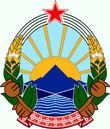Buesti and Ravoi
From Ipon
| |||||||
| Motto: "Perseverenta Prin Unitate si Mindria "
"Perseverance through Unity and Pride"' | |||||||

| |||||||
| Buesti + Ravoi CJ @ Simtropolis | |||||||
| Capital | Constanta | ||||||
| Largest city | Constanta | ||||||
| Official language(s) | Romanian, Buesti | ||||||
| Government President
Prime Minister | Presidential Republic Antov Moisui Zinovy Serdyuk | ||||||
| Recognized State Independence | 1988 from Romania | ||||||
| Area • Total • Water (%) | 83,503 km² 4.1 | ||||||
| Population • 2007 est. • 2004 census • Density | 17,403,050 (60) 16,743,329 208/km² (57) | ||||||
| GDP (PPP) • Total • Per capita | 166.05 Billion USD $9542 | ||||||
| HDI | 0.793 | ||||||
| Currency | Leu (Lu)
| ||||||
| Time zone • Summer (DST) | EET (UTC+2) +2 (UTC+2) | ||||||
| Internet TLD | .br | ||||||
| Calling code | +45
| ||||||
[edit] History
[edit] Early History
The oldest modern human remains in Europe were discovered in the "Cave With Bones" in present day Buesti. The remains are approximately 42,000 years old and as Europes oldest remains of Homo sapiens, they may represent the first such people to have entered the continent. But the earliest written evidence of people living in the territory of the present-day Buesti comes from Herodotus in book IV of his Histories (Herodotus) written 440 BCE, where he writes about the Getae tribes
The Province of Roman Dacia
Dacians were a branch of Thracians that inhabited Dacia (corresponding to modern Romania, Moldova and Buesti). The Dacian kingdom reached its maximum expansion during King Burebista, around 82 BC, and soon came under the scrutiny of the neighboring Roman Empire. After an attack by the Dacians on the Roman province of Moesia in 87 AD, the Romans led a series of wars (Dacian Wars) which eventually led to the victory of Emperor Trajan in 106 AD, and transformed the core of the kingdom into the province of Roman Dacia.
Rich ore deposits were found in the province, and especially gold and silver were plentiful. which led to Rome heavily colonizing the province. This brought the Vulgar Latin and started a period of intense romanization, that would give birth to the proto-Buesti. Nevertheless, in the 3rd century AD, with the invasions of migratory populations such as Goths, the Roman Empire was forced to pull out of Dacia around 271 AD, thus making it the first province to be abandoned.
Several competing theories have been generated to explain the origin of modern Buesti. Linguistic and geo-historical analysis tend to indicate that Buesti have coalesced as a major ethnic group both South and North of the Danube.
[edit] Middle Ages
After the Roman army and administration left Dacia, the territory was invaded by the Goths,] then, in the 4th century by Huns.
In the Middle Ages, Buestians lived in a distinct principality: Moldavia. But only in the 14th century the larger principality of Wallachia joined with Moldavia to fight the major threat of the Ottoman Empire.
By 1541, the entire Balkan peninsula and most of Hungary became Ottoman provinces. In contrast, Moldavia came under Ottoman suzerainty, but conserved fully internal autonomy and, until the 18th century, some external independence. During this period the Buesti lands were characterised by the slow disappearance of the feudal system; the distinguishment of some rulers like Stephen the Great, Vasile Lupu, and Dimitrie Cantemir and the appearance of the Russian Empire as a political and military influence.
n 1600, the principalities of Wallachia, Moldova and Transylvania were simultaneously headed by the Wallachian prince Michael the Brave (Mihai Viteazul), Ban of Oltenia, but the chance for a unity dissolved after Mihai was killed, only one year later, by the soldiers of an Austrian army general Giorgio Basta. Mihai Viteazul, who was prince of Transylvania for less than one year, intended for the first time to unite the three principalities and to lay down foundations of a single state in a territory comparable to today's Romania and F.B.R.
After his death, as vassal tributary states, Moldova had complete internal autonomy and an external independence, which was finally lost in the 18th century. In 1775, the Austrian empire occupied the north-western part of Moldavia, later called Bukovina, while the eastern half of the principality (called Bessarabia) was occupied in 1812 by Russia.


